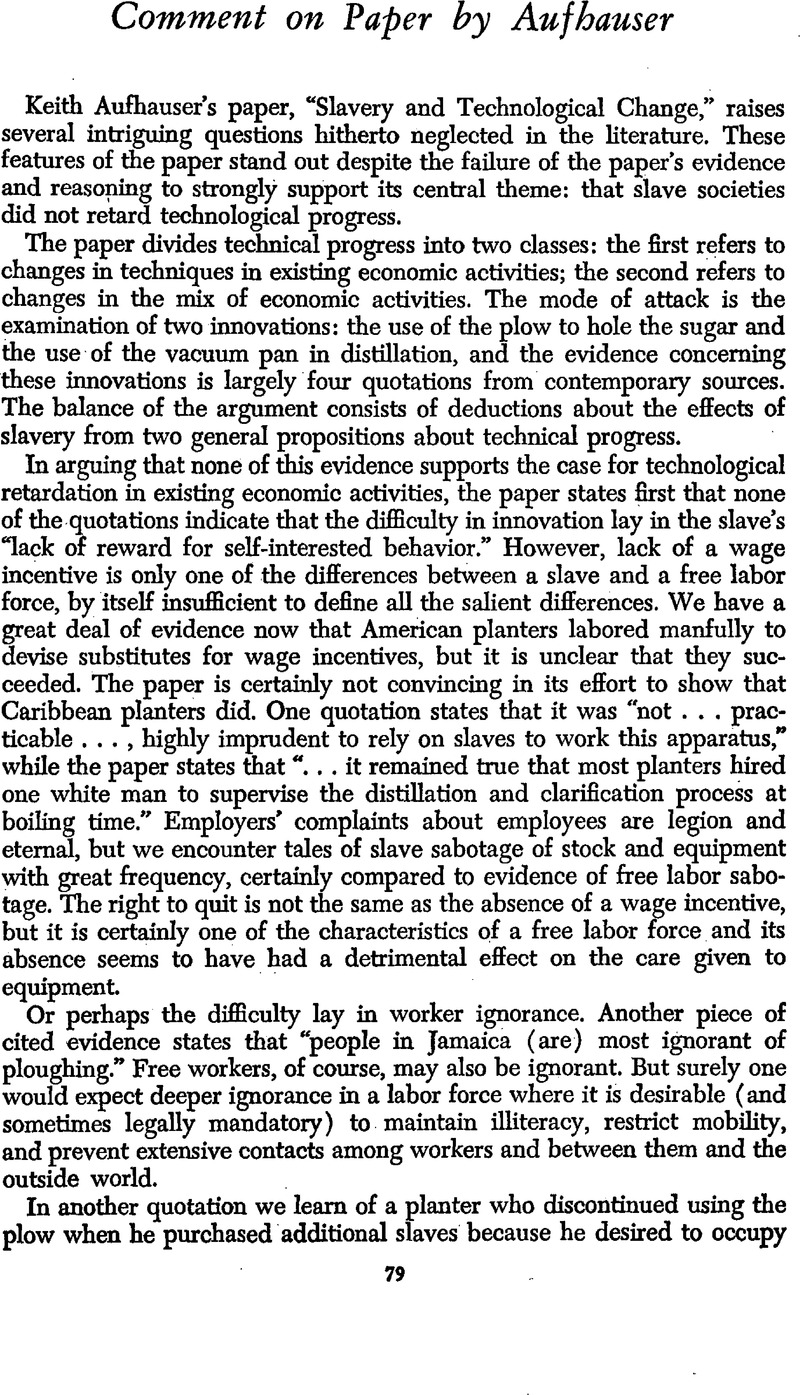Published online by Cambridge University Press: 11 May 2010

page 80 note 1 Rosenberg, N., “The Direction of Technological Change: Inducement Mechanisms and Focusing Devices,” Economic Development and Cultural Change, XVIII (October 1969), 12–17.Google ScholarMarx, K., Capital (N.Y.: International Publishers, 1947Google Scholar; reprint of 1889 English ed., trans, of 3rd German ed.), vol. I, pp. 427–449. Marx's view of the effects of a high land/labor ratio imply he would not expect such opposition in the New World (pp. 790–800). Strassman, W. P., Risk and Technical Innovation: American Manufacturing Methods during the Nineteenth Century (Ithaca: Cornell University Press, 1959), pp. 55, 112–113, 184–189.Google Scholar
page 81 note 2 U.S. Bureau of the Census, Department of Commerce, Historical Statistics of the United States (Washington: G.P.O., 1960), pp. 74, 90, 91, 94.Google Scholar
page 81 note 3 Arrow, Kenneth, “Economic Welfare and the Allocation of Resources for Invention,” in NBER, The Rate and Direction of Inventive Activity: Economic and Social Factors (Princeton: Princeton University Press, 1962), pp. 616–619.Google Scholar Conversation with William Parker, spring 1965. A form of the argument applied to mineral discoveries appears in Parker, W. N., “The Land, Minerals, Water, and Forests,” in Davis, L. E., et al., American Economic Growth (New York: Harper & Row, 1972), pp. 96–98.Google Scholar
page 82 note 4 Mishan, E. J., Technology and Growth (New York: Praeger Publishers, 1970), pp. 148–151.Google ScholarMarglin, S., “What do Bosses Do?” Harvard University mimeo, August 1971, pp. 7–9.Google Scholar